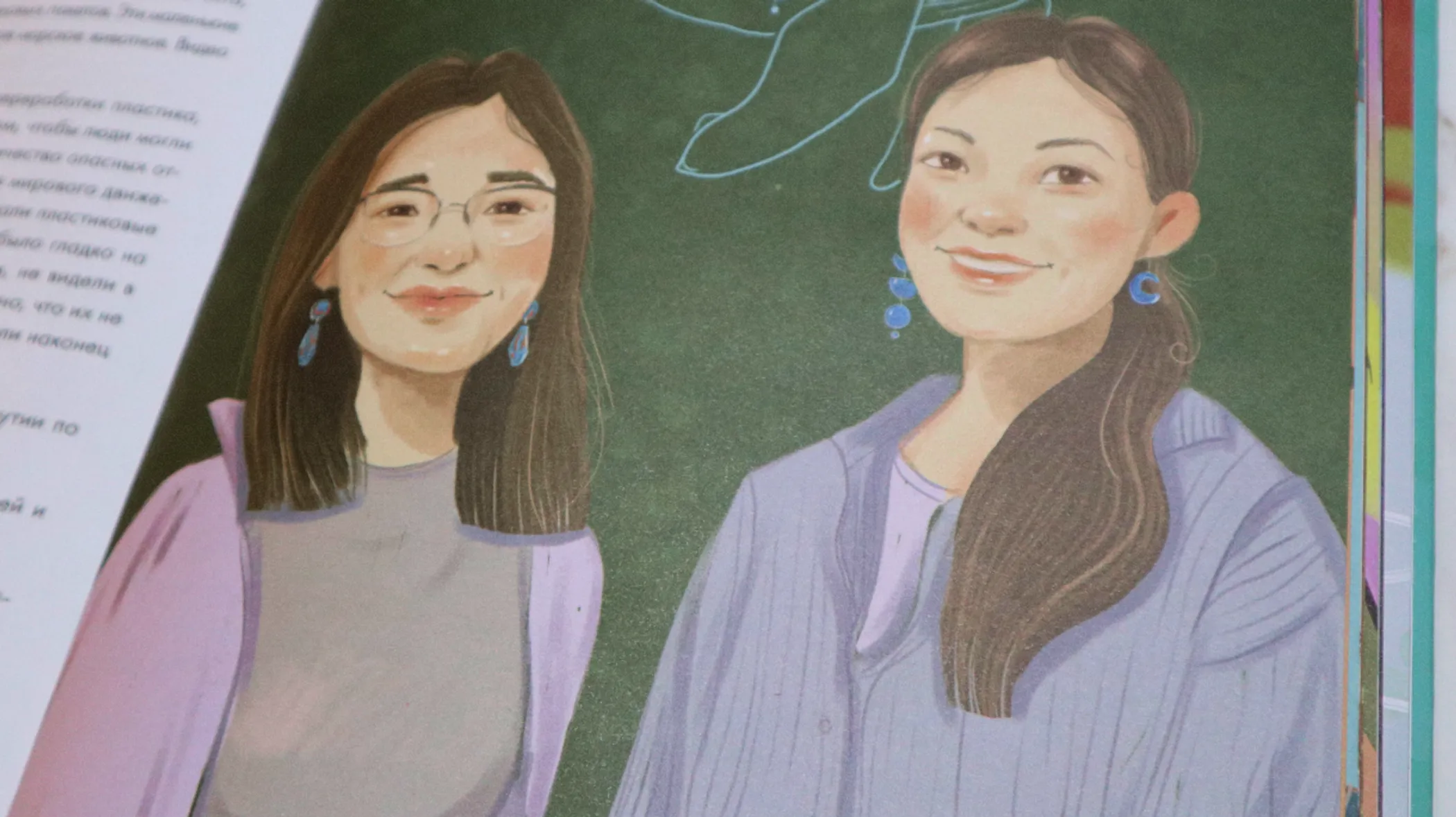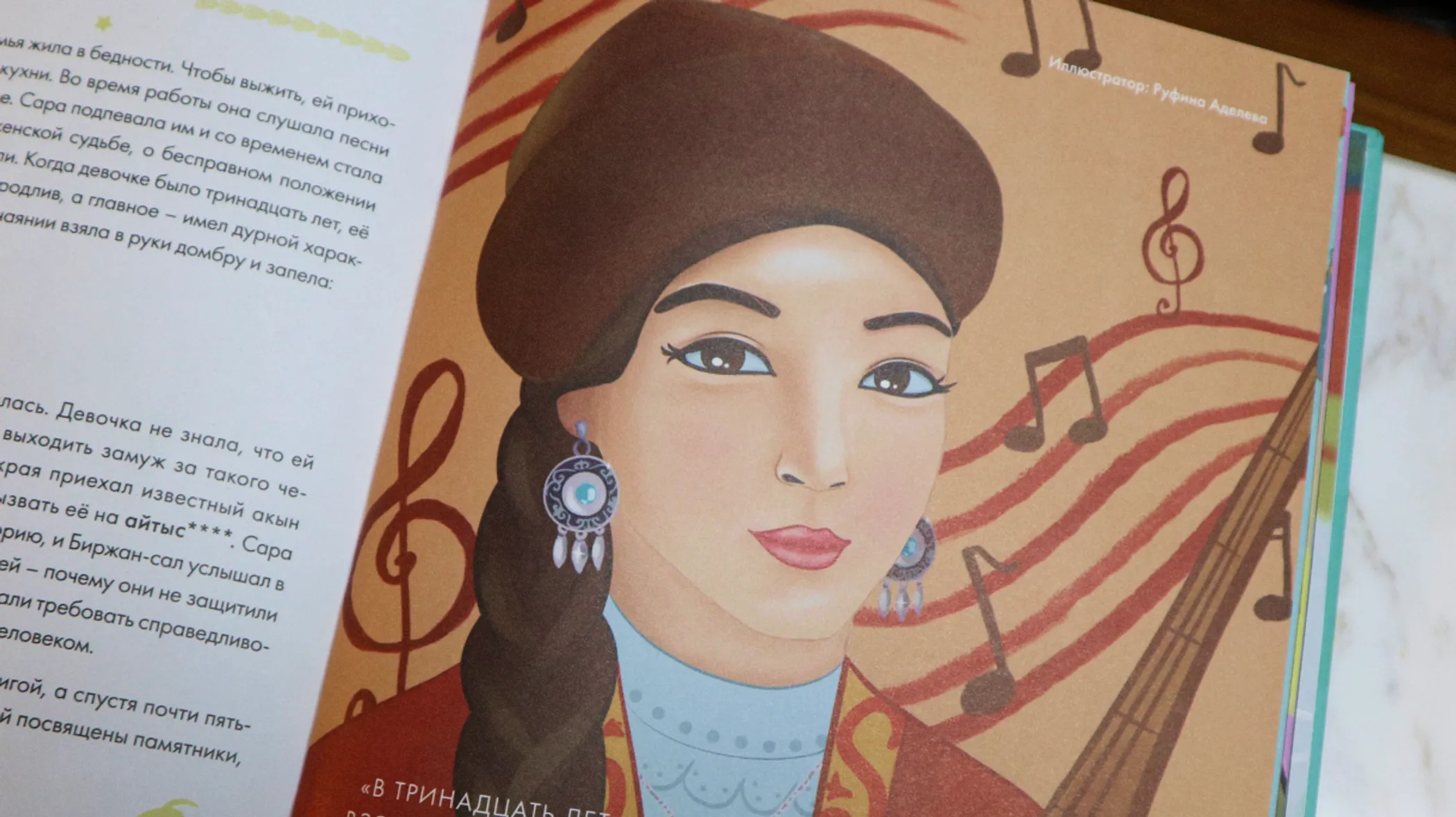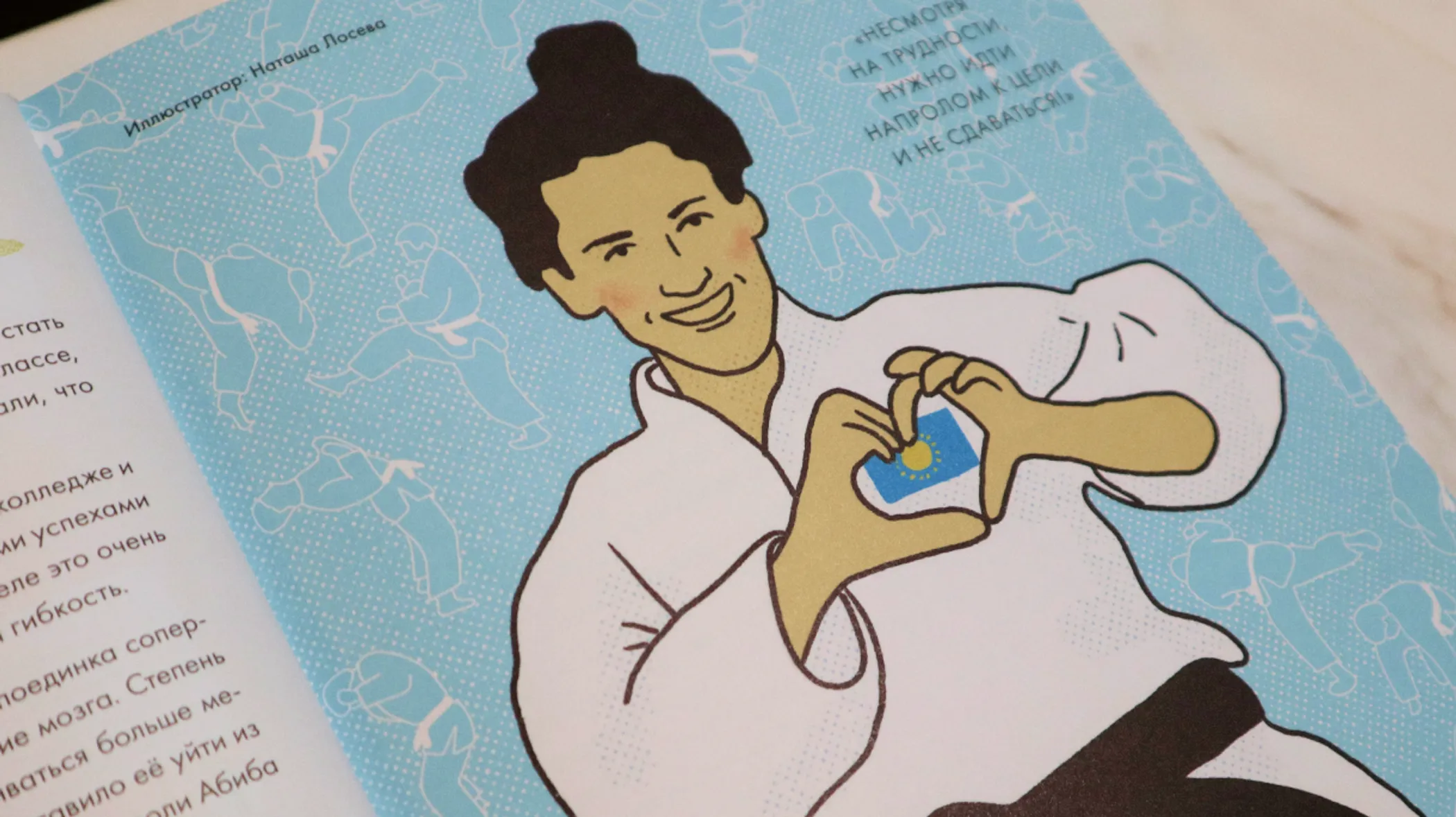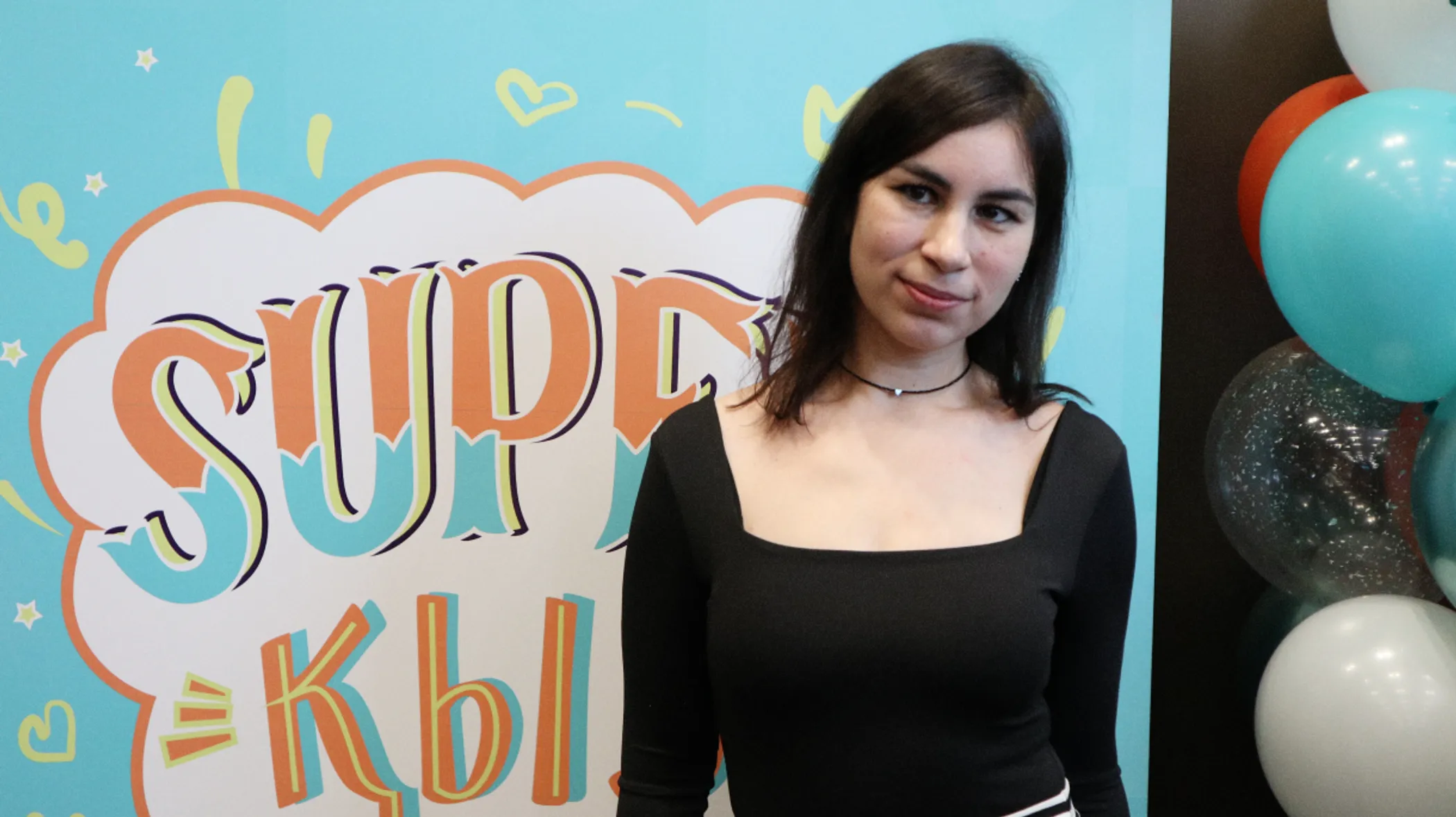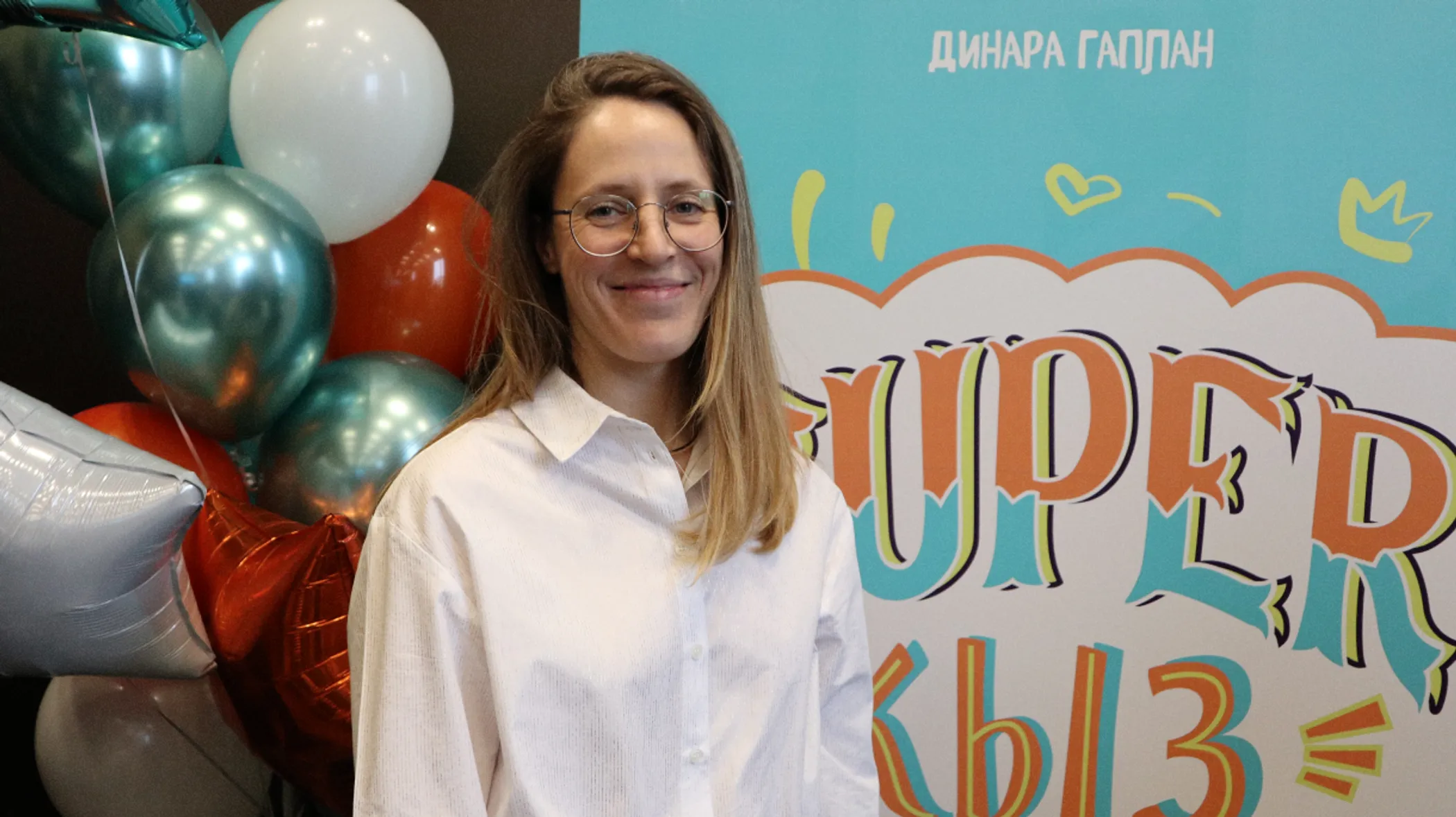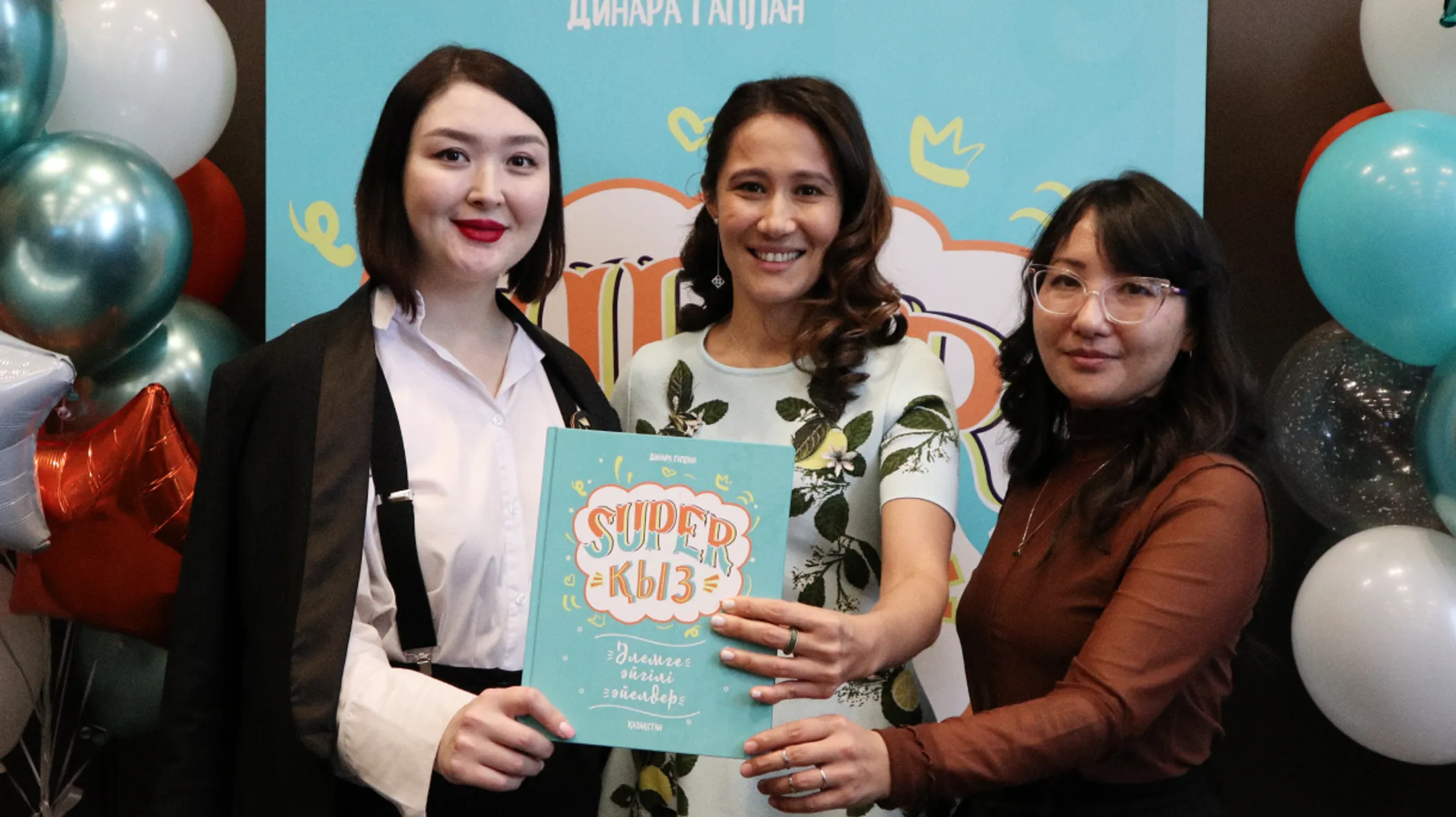“I belong to the fortunate generation that joined the struggle to build a new way of life,” reads the back of a flyer. The front is an image of a woman in a headpiece and a rough working suit, right for a Soviet-era engineer. She was a metallurgist. The first Kazakh woman to tread this path. At the top, the flyer presents, “Madina Begaliyeva, Women’s Rights Advocate and Engineer.” There are many more of these carefully placed on high-rise tables, each belonging to different women from different eras who made their mark in local history. The hall is busy with people, a harper plays in the background. She is Magrufa Mukazhanova, a pioneer of the local harp scene. Her flyer bears a motto, “I didn’t choose the harp, the harp chose me,” a phrase she repeated with a smile, sharing her professional path with QazMonitor. This is a book launch for Super Kyz, an encyclopedia for kids, their parents, and everyone who wants to know more about the women from Kazakhstan.
It was a sleepy noon on March 3rd. Gray skies above, steel blue skyscraper on Syganak, slightly jammed traffic, so, nothing that would seem out of the ordinary for a typical Sunday in Astana. But inside that skyscraper, there was a ruckus near the hall with bright aquamarine stands that read, "Super Kyz, The Women That Have The World Talk" (Супер Қыз: Әлемге әйгілі әйелдер/Женщины, о которых говорит весь мир).
Nearby stood Dinara Gaplan, the book’s creator. When she wasn’t supervising the whole ordeal, she would greet the attendees — her peers, the illustrators, and the press. “I always thought that I would have to turn sixty and retire to write a book,” she shared. But the occasion came much sooner. “I'm a mom of three daughters, the eldest is sixteen years old, the middle — twelve years old, and the youngest is nine. A few years ago, as they were growing up, I began to notice that their role models are all women from abroad.” Gaplan wanted her daughters to draw from local inspirations but she soon realized that she and her contemporaries had limited knowledge on the matter themselves. So, the idea was born.
Super Kyz is a colorful library fit for a backpack. Recommended for readers aged six and up and available in Kazakh and Russian, it describes the stories of seventy women – from the days of Bopay Khanym, the revered ruler of the Minor Juz, or the slightly staticky announcements of Nelli Omarova, the voice of Kazakh TV, up to the present-day inspirations of Aya Shalkar, the businesswoman, artist, model, and Yaroslava Kravchuk, an aspiring spacecraft engineer. Each entry features an illustration and a story behind each life path.
Getting in touch with modern heroines proved to be straightforward, but the historical figures required a more nuanced approach, “Of course, with those who are no longer alive, we contacted their relatives. It was challenging to locate relatives and verify details; in many cases, we coordinated portraits with them. Some details were lifted from archives,” shared Gaplan. Among the featured stories, one dates back to 570–520 BCE — the time of Queen Tomiris, who ruled over the nomadic Saka people and stood her ground against the conquest of Cyrus the Great, and had him and his armies face their downfall in the floodplains of Syr Darya. Her name reaches so far back into antiquity, that the Super Kyz team had to take some liberties; her page spread has an artistic rendition of Almira Tursyn, an actress and scriptwriter who portrayed the legendary queen in the 2019 biopic.
A great deal of deliberation went into this book. A near-mythical figure of the past translated into a modern role model, a successful woman of today, and by the way that the book’s coordinator, Adel Shaikhova, talked about it, there was a whole process behind it. “Our heroine must be the first in their field, either in Kazakhstan or in the world,” she explained. Each entry in the book describes an outstanding feat, a woman who pushed the envelope in the established scene. But with how scattered data is — on local women, women in general — the team had to go into heavy research to weigh facts to the words. As Shaikhova put it, the recognition by the international or local community has a lot to do with it but there's also a nuanced aspect. “It is crucial for us that the heroine embodies and communicates the values we hold dear. These values play a key role.” Any woman can and does excel in any profession.
No matter what profession she chooses, the most important thing is the journey, the path. This is about each girl's ability to listen to her heart, her spirit, to find her talents and nurture them.
Sometime during the part when everyone involved took turns at the microphone to share a few words, we took our chance to chat with artists whose touch added so much to the book, not least their personal discovery of these women.
Colors on the joint feature for Sisters Ybyshev, eco designers Saida and Dina, carry the soft, gentle even, mark of Aliya Moldakhmet, who was set in her tracks to “convey not only their outward appearance, but also their inner state.” For sisters specifically, Moldakhmet explained, “I wanted to depict their wonderful smiles and the things they’re associated with,” a deep green background over which drawn an outline of a whale adorned with jewelry. The artist’s other contributions include:
Heroine of WWII Manshuk Mametova
Stuntwoman Aliya Iskakova, as a Lara Croft-esque character
Aliya Moldakhmet and her peer, Aidana Minaidarova, both belong to the Arts Help community, an artists' group that donates to charity. “They put out a call for artists, and we just answered it. Most of the group participated,” recalled the latter. At the time, it was the first edition of Super Kyz, featuring fifty women on its pages. One of them was Gasya Atherton, a Cirque Du Soleil artist, the first task that Aidana Minaidarova had to tackle. “All in all, I was lucky that all the heroines were my contemporaries, and you can easily contact them,” she said, recalling that her spin on the famed “We Can Do It!” poster brought great joy to Gasya Atherton, who later reached out to the artist. In the second edition, the artist's contributions also include:
TV producer and public leader Aruzhan Sain
Opera singer Maria Mudryak
Artists who had their share of historical figures had to make the ‘depiction of a depiction’ work. Rufina Adeleva, who worked on an image of a poet and music performer from the turn of the 20th century, explained, “There was a bit of difficulty spike with Sara Tastanbekkyzy because she is a historical figure and no reliable photographs have survived to this day.” As a workaround, Adeleva based her depiction on the poet’s portrait painted in 1950 by Margarita Vashchenko. “She traveled to Sara's homeland and, through the accounts of her descendants, crafted a portrait.” Adeleva’s contribution also includes:
Human rights advocate Aliya Arkharova
Businesswoman Gaukhar Kapparova
It had a surprise factor, I must admit. I consider myself rather modest, but I'm often referred to as "The First Harper in Kazakhstan". I never said anything of sorts! When I was on TV and Aiman Mussakhodzhayeva interviewed me, she would have these labels – the first, the foremost, the best; and you could see the surprise on my face. When I joined [Super Kyz], I was also informed that I was the only harper, and I said, “Now, I’m not the only one; I have my students.
Magrufa Mukazhanova was a young girl when she took up the harp in a remote village by pure accident. Bit by bit her work laid the foundation for future generations. This notion of unseen work was unintentionally echoed by illustrator Natalie Loseva. Her name in the aquamarine book presents the rendition of judoka Abiba Abuzhakynova’s trademark heart gesture, which the athlete does every time after she chucks her opponents onto the mats. For Loseva, that unseen work carries much deliberation and must be acknowledged. “I'm just a former medical doctor; I spent eleven years in medicine, specializing in oncohematology," she shared, noting that numerous doctors work tirelessly in their field but are often unknown. The quiet work that makes history.


